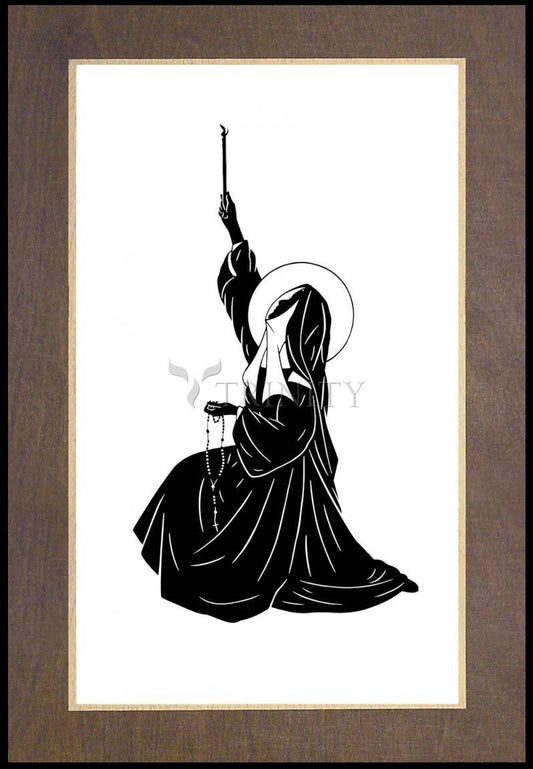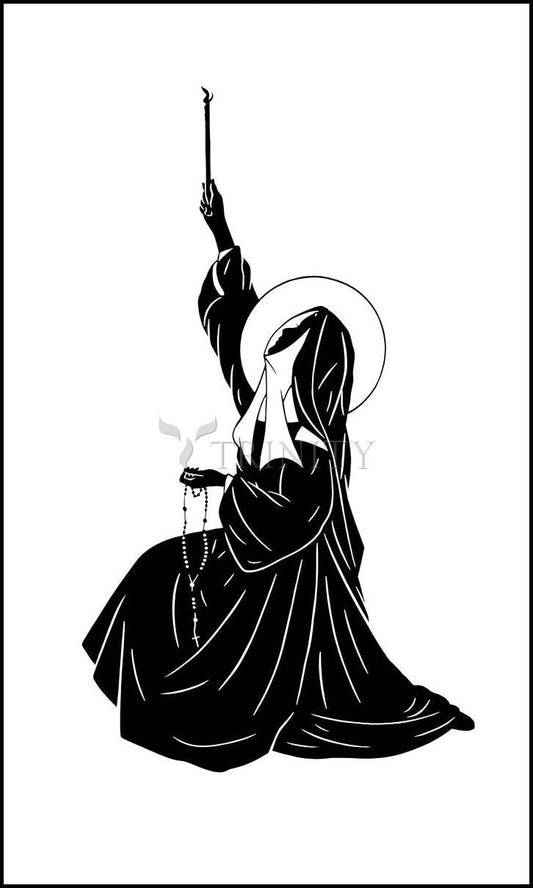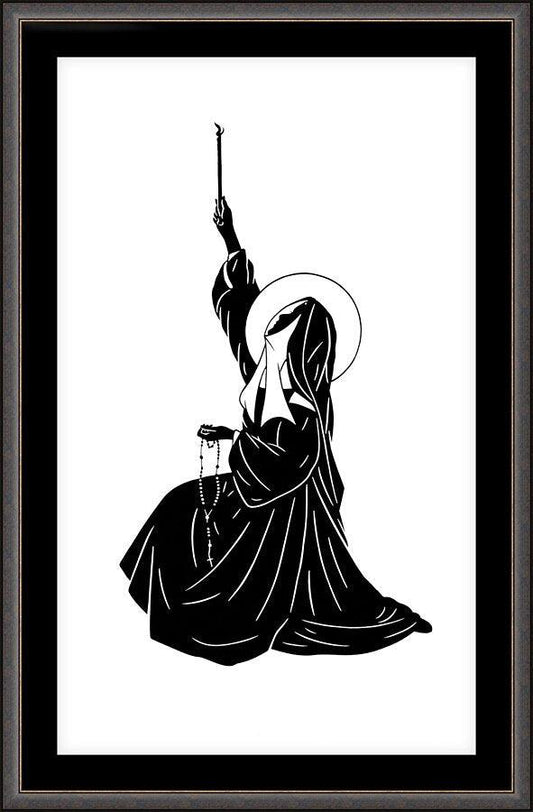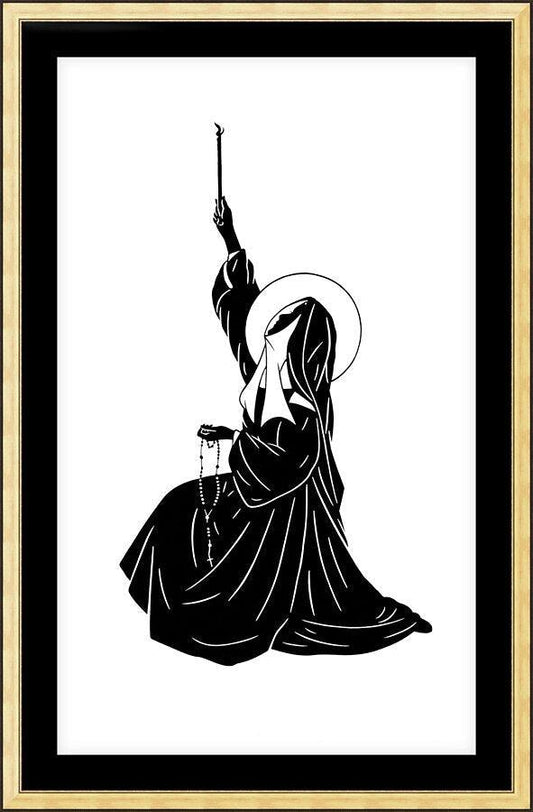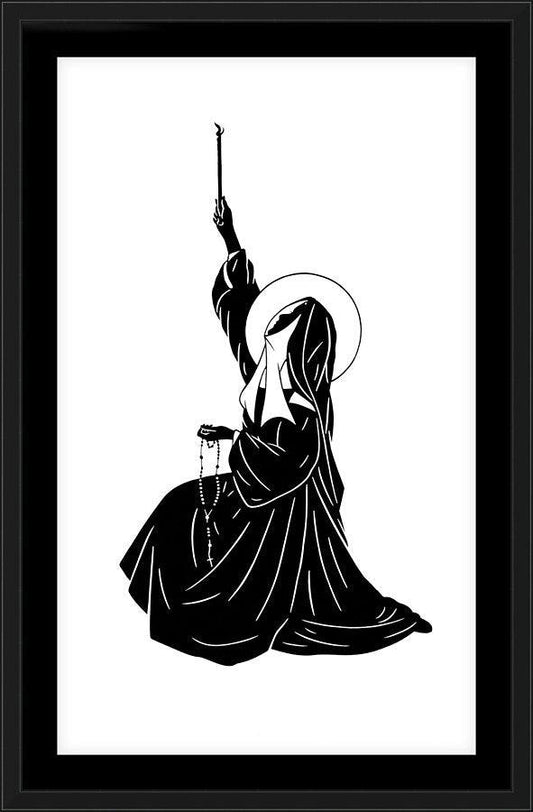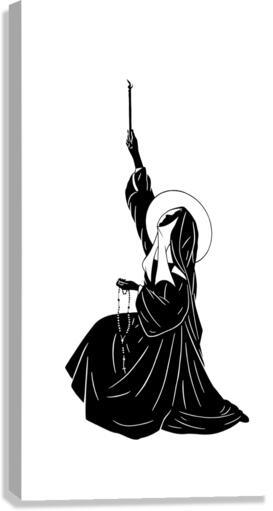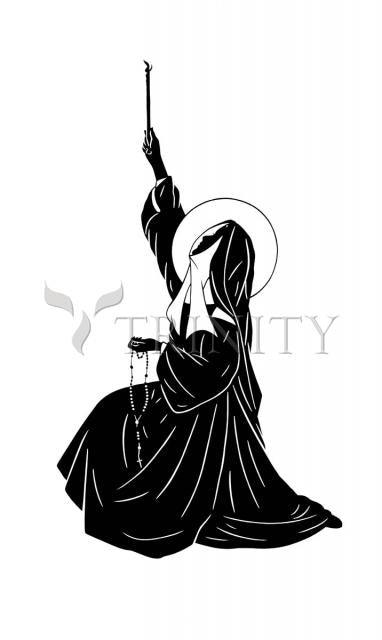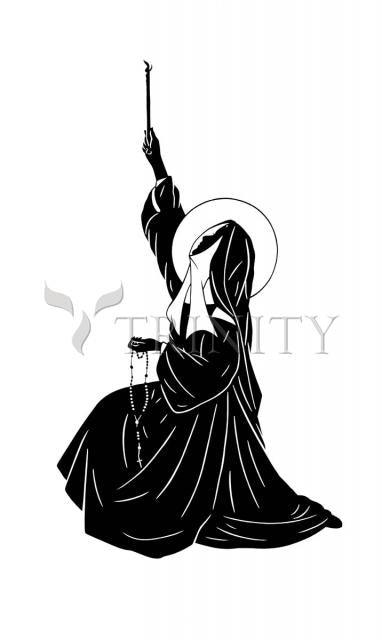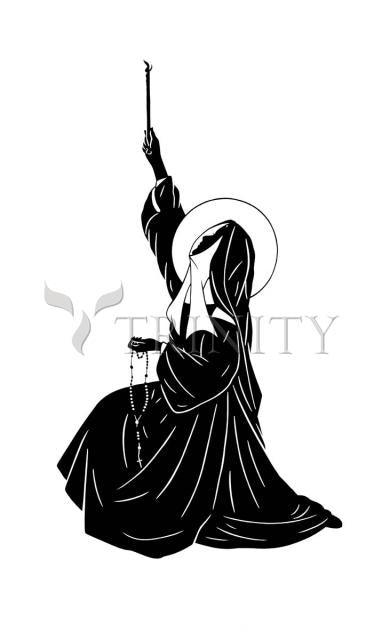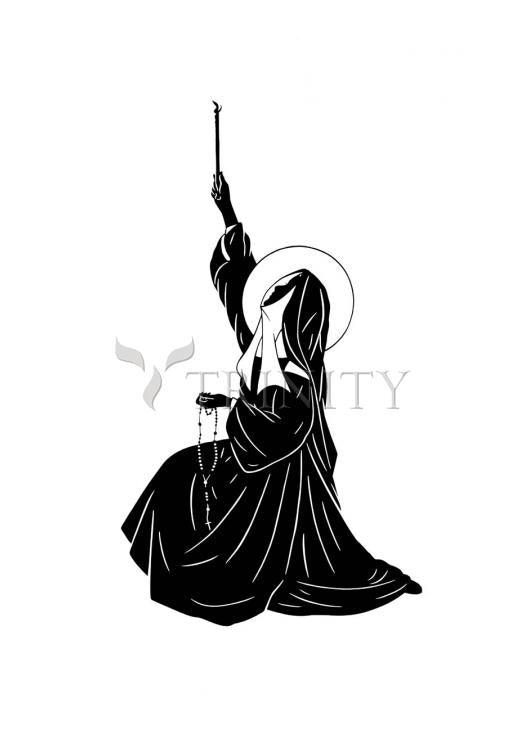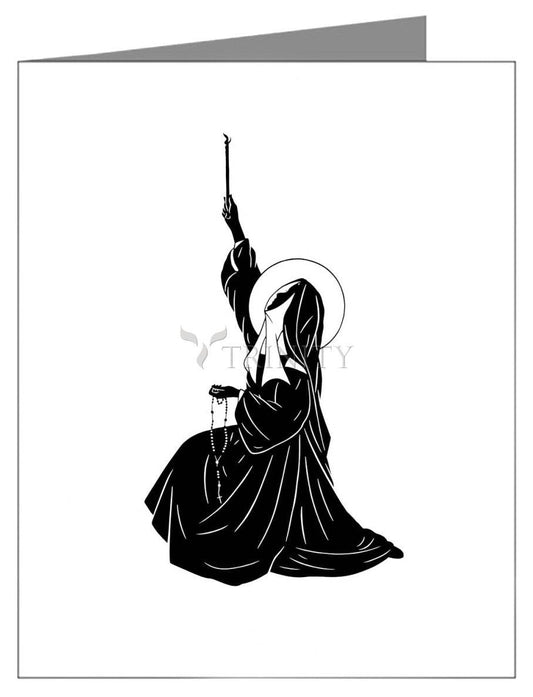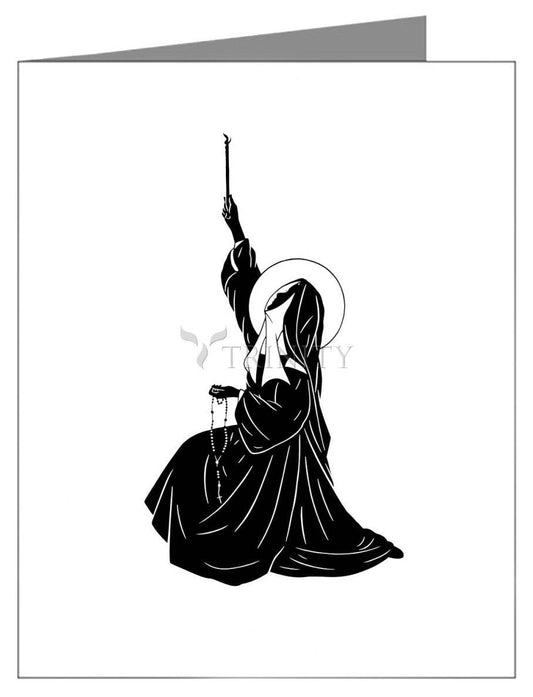Marie Bernarde "Bernadette" Soubirous (Occitan: Bernadeta Sobirós; 7 January 1844 " 16 April 1879) was the firstborn daughter of a miller from Lourdes, France, and is venerated as a Christian mystic and Saint in the Catholic Church.
Soubirous is best known for the Marian apparitions of a "small young lady" who asked for a chapel to be built at the nearby garbage dump of the cave-grotto at Massabielle where apparitions are said to have occurred between 11 February and 16 July 1858. She would later receive recognition when the lady who appeared to her identified herself as the Immaculate Conception.
Despite initial skepticism from the Catholic Church, Soubirous's claims were eventually declared "worthy of belief" after a canonical investigation, and the Marian apparition is now known as Our Lady of Lourdes. Since her death, Soubirous's body has apparently remained internally incorrupt, but it is not without blemish; during her third exhumation in 1925, the firm of Pierre Imans made light wax coverings for her face and her hands due to the discoloration that her skin had undergone. These masks were placed on her face and hands before she was moved to her crystal reliquary in June 1925.
The Marian shrine at Lourdes (Midi-Pyrénées, France) went on to become a major pilgrimage site, attracting over five million pilgrims of all denominations each year.
On December 8, 1933, Pope Pius XI declared Bernadette Soubirous a Saint of the Catholic Church. Her feast-day was fixed for February 18, the day her Lady promised to make her happy, not in this life, but in the next. The Faithful however give her two more feast-days"April 16, the day of her death, and February 11"the day her Lady stepped from Heaven into her heart.
Visions
By the time of the events at the grotto, her family's financial and social status had declined to the point where they lived in a one-room basement, formerly used as a jail, called le cachot, "the dungeon," where they were housed for free by her mother's cousin, Andre Sajoux.
On 11 February 1858, Bernadette, then aged 14, was out gathering firewood with her sister Marie and a friend near the grotto of Massabielle (Tuta de Massavielha) when she experienced her first vision. As she recounted later, while the other girls crossed the little stream in front of the grotto and walked on, Bernadette stayed behind, looking for a place to cross where she wouldn't get her stockings wet. She finally sat down to take her shoes off in order to cross the water and was lowering her stocking when she heard the sound of rushing wind, but nothing moved. A wild rose in a natural niche in the grotto, however, did move. From the niche, or rather the dark alcove behind it, "came a dazzling light, and a white figure." This was the first of 18 visions of what she referred to as aquero, Gascon Occitan for "that". In later testimony, she called it "a small young lady" (uo petito damizelo). Her sister and her friend stated that they had seen nothing.
On 14 February, after Sunday Mass, Bernadette, with her sister Marie and some other girls, returned to the grotto. Bernadette knelt down immediately, saying she saw aquero again and falling into a trance. When one of the girls threw holy water at the niche and another threw a rock from above that shattered on the ground, the apparition disappeared. On her next visit, 18 February, she said that "the vision" asked her to return to the grotto every day for a fortnight.
This period of almost daily visions came to be known as la Quinzaine sacrée, "holy fortnight." Initially, her parents, especially her mother, were embarrassed and tried to forbid her to go. The supposed apparition did not identify herself until the seventeenth vision. Although the townspeople who believed she was telling the truth assumed she saw the Virgin Mary, Bernadette never claimed it to be Mary, consistently using the word aquero. She described the lady as wearing a white veil, a blue girdle and with a yellow rose on each foot " compatible with "a description of any statue of the Virgin in a village church".
Bernadette's story caused a sensation with the townspeople, who were divided in their opinions on whether or not Bernadette was telling the truth. Some believed her to have a mental illness and demanded she be put in an asylum.
The other contents of Bernadette's reported visions were simple and focused on the need for prayer and penance. On 25 February she explained that the vision had told her "to drink of the water of the spring, to wash in it and to eat the herb that grew there," as an act of penance. To everyone's surprise, the next day the grotto was no longer muddy but clear water flowed. On 2 March, at the thirteenth of the alleged apparitions, Bernadette told her family that the lady said that "a chapel should be built and a procession formed".
Her 16th claimed vision, which she stated went on for over an hour, was on 25 March. According to Bernadette's account, during that visitation, she again asked the woman for her name but the lady just smiled back. She repeated the question three more times and finally heard the lady say, in Gascon Occitan, "I am the Immaculate Conception" (Qué soï era immaculado councepcioé, a phonetic transcription of Que soi era immaculada concepcion).
Some of the people who interviewed her after her revelation of the visions thought her simple-minded. However, despite being rigorously interviewed by officials of both the Catholic Church and the French government, she stuck consistently to her story.
Results of her visions
After thorough investigation Church authorities confirmed the authenticity of the apparitions in 1862. In the 150 years since Bernadette dug up the spring, 69 cures have been verified by the Lourdes Medical Bureau as "inexplicable" " after what the Church claims are "extremely rigorous scientific and medical examinations" that failed to find any other explanation. The Lourdes Commission that examined Bernadette after the visions ran an intensive analysis on the water and found that, while it had a high mineral content, it contained nothing out of the ordinary that would account for the cures attributed to it. Bernadette said that it was faith and prayer that cured the sick.
Her request to the local priest to build a chapel at the site of her visions eventually gave rise to a number of chapels and churches at Lourdes. The Sanctuary of Our Lady of Lourdes is now one of the major Catholic pilgrimage sites in the world. One of the churches built at the site, the Basilica of St. Pius X, can accommodate 25,000 people and was dedicated by the future Saint John XXIII when he was the Papal Nuncio to France. Close to 5 million pilgrims from all over the world visit Lourdes (population of about 15,000) every year.
Born:January 7, 1844 at Lourdes, France
Died:April 16, 1879, Nevers, France
Canonized:1933 by Pope Pius XI



